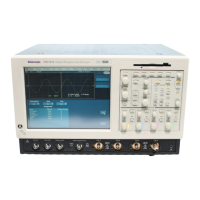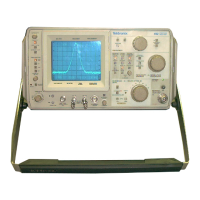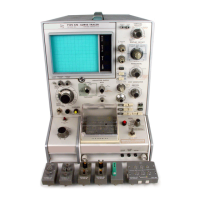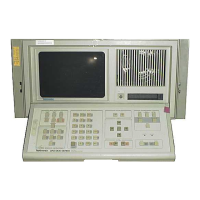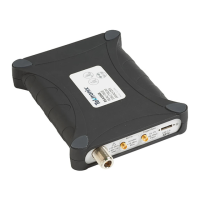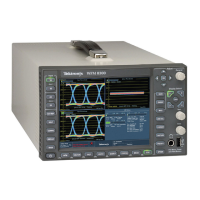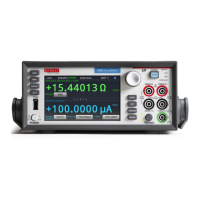Acquiring Waveforms
CSA7000B Series & TDS7000B Series Instruments User Manual
3-39
1st Acquisition cycle
3rd Acquisition cycle
nth Acquisition cycle
2nd Acquisition cycle
Record points
Figure 3- 12: Equivalent-time sampling
The type of equivalent-time sampling the instrument uses is called random
equivalent-time sampling. Although it takes the samples sequentially in time, it
takes them randomly with respect to the trigger. R andom sampling occurs
because the instrument sample clock runs asynchronously with respect to the
input signal and the signal trigger. The instrument takes samples independently
of the trigger position and displays them based on the time difference between
the sample and the trigger.
Your instrument can interpolate between the samples it acquires. In equivalent-
time sampling, it interpolates only when it does not have all the real samples it
needs to fill its displayed waveform. When setting ZOOM to progressively larger
amounts of expansion, the instrument then interpolates to create the intervening
points in the displayed waveform. If the time per division is set fast enough to
require equivalent time but equivalent time is disabled, the instrument interpo-
lates points. There are two options for interpolation: linear or sin(x)/x. (The
instrument can also equivalent-time sample to acquire more samples; see
Equivalent-Time Sampling on page 3--37.)
Linear interpolation. Linear interpolation computes record points between actual
acquired samples by using a straight line fit. It assumes all the interpolated
points fall in their appropriate point in time on that straight line. Linear
interpolation is useful for many waveforms such as pulse trains.
Sin(x)/x interpolation. Sin(x)/x interpolation computes record points using a curve
fit between the actual values acquired. It assumes all the interpolated points fall
along that curve. Sin(x)/x is particularly useful when acquiring more rounded
waveforms such as sine waves. Actually, it is appropriate for general use,
although it may introduce some overshoot or undershoot in signals with fast rise
times, especially if you use zoom and the waveform edges are undersampled.
Interpolation

